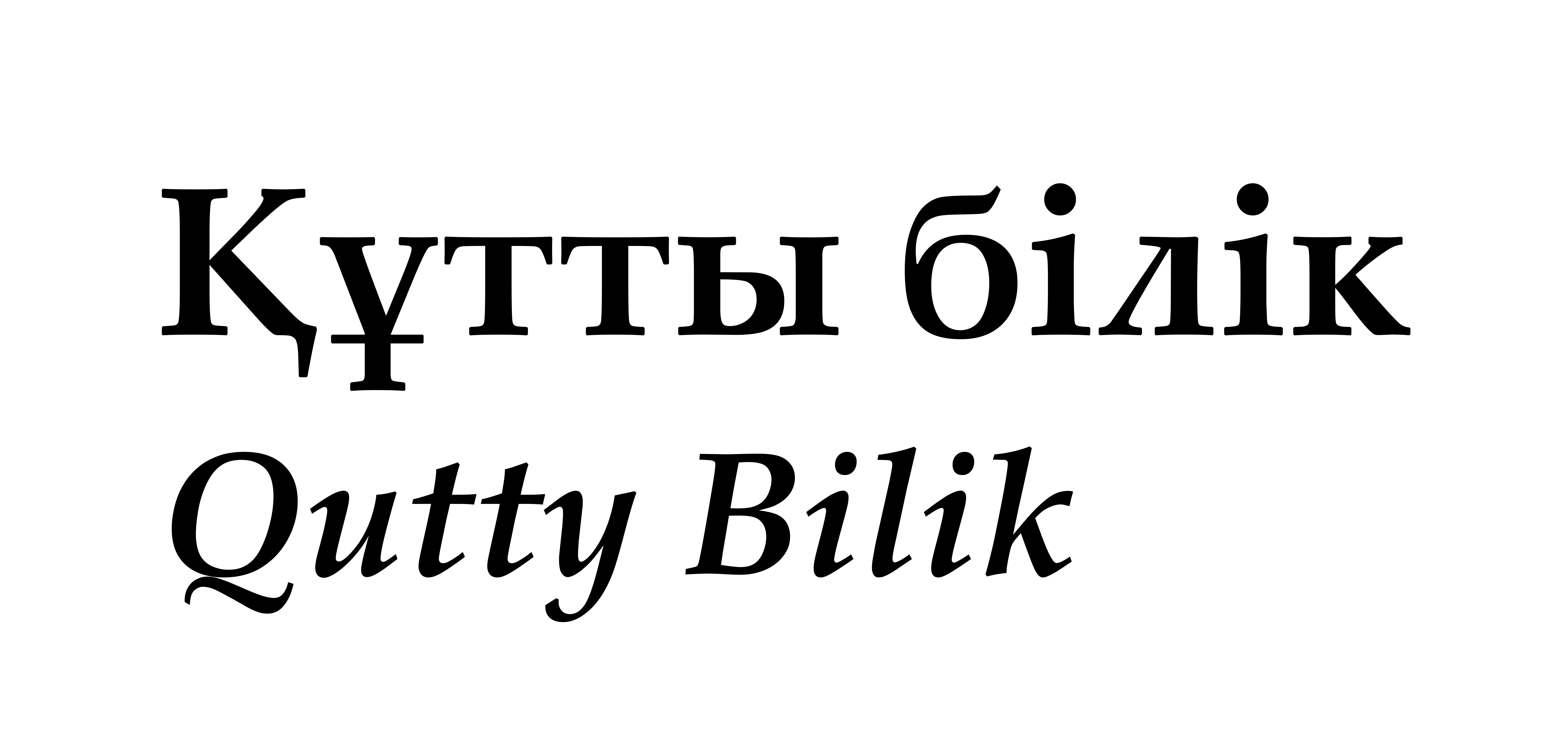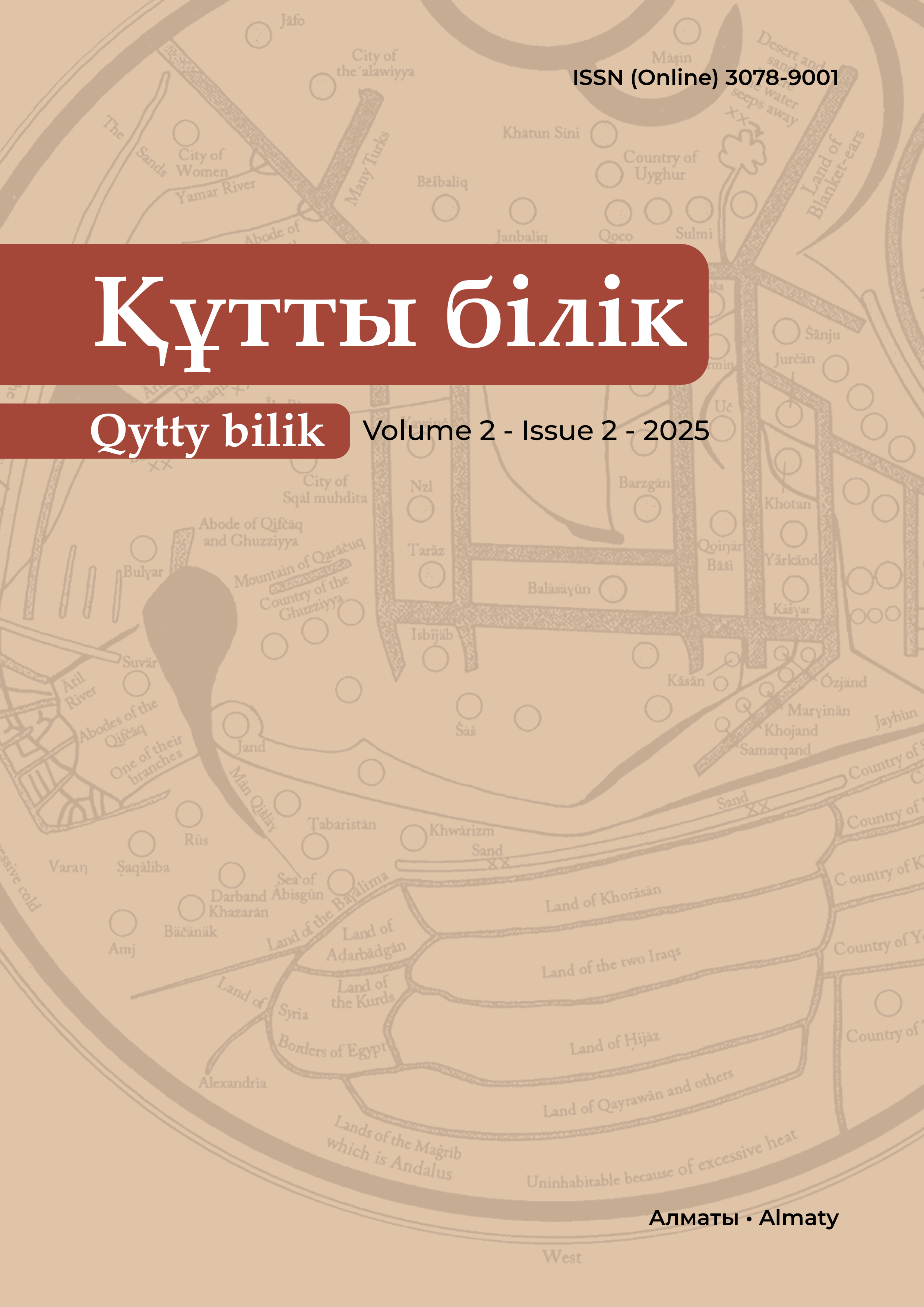Abai’s Legacy in Kazakh Animation: Medialinguistic Adaptation and Child Discourse
DOI:
https://doi.org/10.71078/zc3qqx29Keywords:
Abai’s legacy, child discourse, medialinguistics, cognitive pragmatics, linguoconceptologyAbstract
This article presents a comprehensive analysis of the adaptation of Abai Qunanbaiuly’s linguistic and philosophical legacy in contemporary Kazakh animated media texts through the lens of medialinguistics and cognitive pragmatics. The relevance of the study lies in the growing role of animated media as an emotionally engaging and aesthetically effective tool for transmitting national and spiritual codes to children. The aim of the research is to identify how Abai’s key concepts (mind, heart, will, honor, labor, being human) are represented in multimedia discourse using semiotic, intonational, and cognitive mechanisms.
The methodology is based on qualitative analysis incorporating content analysis, discourse and pragmatic act examination, media-semiotic mapping, conceptual blending theory, and a linguo-conceptual approach. The analyzed data includes domestic animated films broadcast on the Balapan channel such as Muzbalaq, Kulpash, The Shepherd and the Thief, and Er Tostik. The findings demonstrate that Abai’s philosophical legacy is adapted at three levels: didactic – through direct speech acts like advice and commands; behavioral – through the character’s actions and decisions; and metaphorical – via symbolic, intonational, and visual representations.
Furthermore, the study reveals a methodological tension between four key theoretical frameworks: medialinguistics, child discourse, cognitive pragmatics, and linguoconceptology. Each of these disciplines contributes differently to how content is received by children – some emphasize visuality and prosody, while others focus on preserving conceptual integrity. Ultimately, the study underscores the importance of multimedia adaptation as a semiotic system and offers a modern model for encoding national worldview and moral education.
References
Ахметов, З. (1995). Абайдың ақындық әлемі. Алматы: Ғылым.
Дадебаев, Ж. (2021). Абай поэзиясының концептуалды поэтикасы. Алматы: Қазақ университеті.
Добросклонская, Т.Г. (2008). Медиалингвистика: системное описание медиадискурса. Москва: ФЛИНТА.
Есенова, Қ.Ө. (2018). Қазақ медиамәтінінің дискурстық табиғаты. Алматы: Қазақ университеті.
Мырзахметов, М. (2006). Абай және ұлттық идея. Алматы: Ана тілі.
Al-Harbi, S. (2015). The impact of media on children’s language development. European Scientific Journal, 11(17), 51–58.
Austin, J.L. (1962). How to Do Things with Words. Oxford: Clarendon Press.
Fauconnier, G., & Turner, M. (2002). The Way We Think: Conceptual Blending and the Mind’s Hidden Complexities. New York: Basic Books.
Gençalp, H. (2019). Mediated Multimodal Discourse in Social Media. Turkish Online Journal of Design Art and Communication, 9(3), 421–432.
Linebarger, D.L., & Piotrowski, J.T. (2009). Television as storyteller: How exposure to television narratives impacts at-risk preschoolers’ knowledge of story structure and narrative skills. British Journal of Developmental Psychology, 27(1), 47–69. DOI: https://doi.org/10.1348/026151008X400445
Linebarger, D.L., & Vaala, S.E. (2010). Screen media and language development in infants and toddlers: An ecological perspective. Developmental Review, 30(2), 176–202. DOI: https://doi.org/10.1016/j.dr.2010.03.006
Roseberry, S., Hirsh-Pasek, K., & Golinkoff, R. M. (2009). Live action: Can young children learn verbs from video? Child Development, 80(5), 1360–1375. DOI: https://doi.org/10.1111/j.1467-8624.2009.01338.x
Searle, J.R. (1969). Speech Acts: An Essay in the Philosophy of Language. Cambridge University Press. DOI: https://doi.org/10.1017/CBO9781139173438
Sperber, D., & Wilson, D. (1995). Relevance: Communication and Cognition (2nd ed.). Oxford: Blackwell.
Tomasello, M. (2003). Constructing a Language: A Usage-Based Theory of Language Acquisition. Harvard University Press.
Topuzkanamiş, E. (2021). Child Language and Educational Discourse: Structural Repetition Patterns in Turkish Educational Texts. Turkish Journal of Education, 10(1), 12–21.
Türk, A.S. (2023). The semiotic role of animated characters in children’s media. International Journal of Social Humanities Sciences Research, 10(1), 88–102.
Ulu, E. (2020). Representation of Nature in Children’s Literature and Its Effects on Character Development. Journal of Language and Literature Education, 6(2), 34–42.
Vygotsky, L.S. (1991). Thought and Language. Cambridge, MA: MIT Press.
Zimmerman, F. J., Christakis, D. A., & Meltzoff, A. N. (2007). Associations between media viewing and language development in children under age 2 years. Journal of Pediatrics, 151(4), 364–368. DOI: https://doi.org/10.1016/j.jpeds.2007.04.071
Downloads
Published
Issue
Section
License
Copyright (c) 2025 Айнұр Абдыкадырова, Осман Йылдыз (Автор)

This work is licensed under a Creative Commons Attribution-NonCommercial 4.0 International License.






